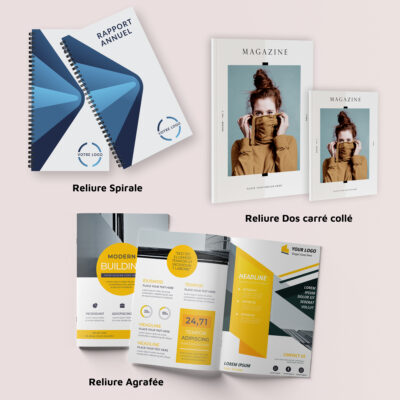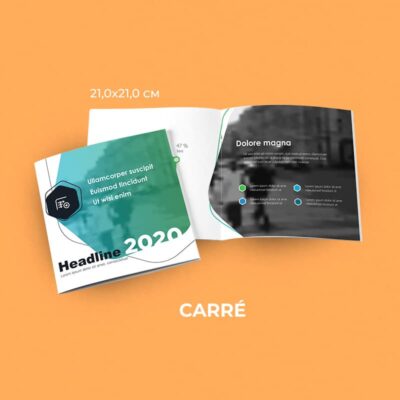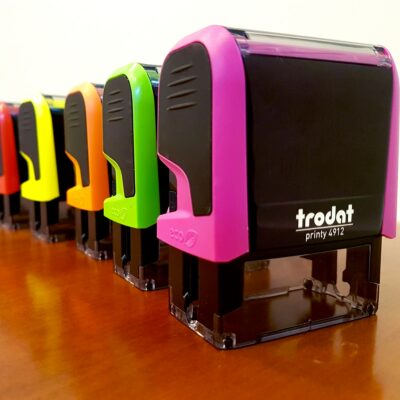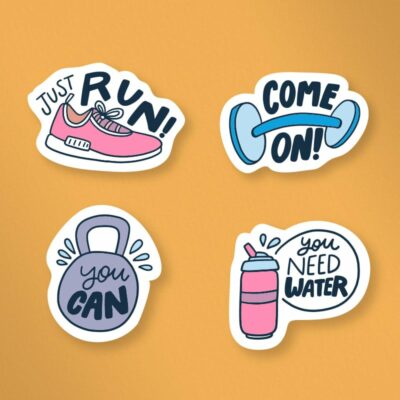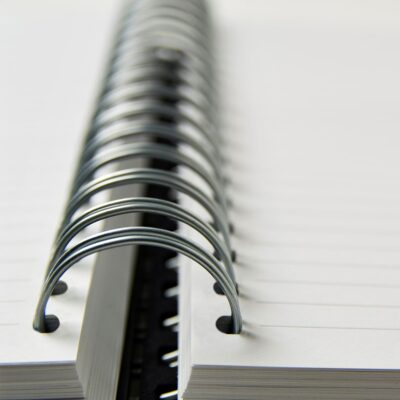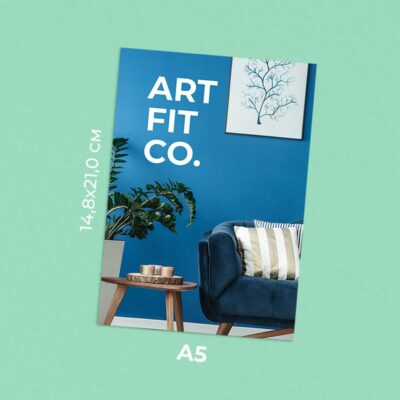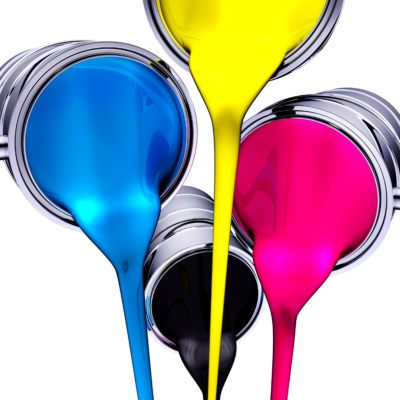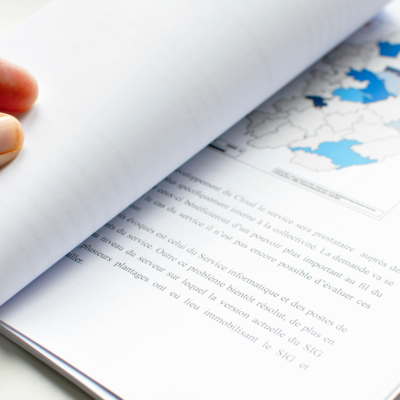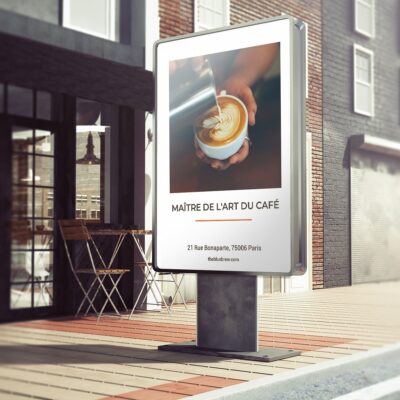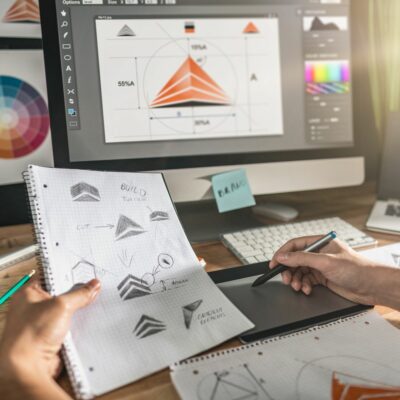- Call us 01 42 61 00 33
Monday to Friday 9:00 - 18:00 IMMEDIATE
CUSTOMISED QUOTERETRAIT EXPRESS
& LIVRAISON J+1-
-
- All
products - Cards
- Brochure
Files - Advertising
- Printing
- Office automation
- Adhesives
- Signage
- Themes
- Printing
Express in 4H
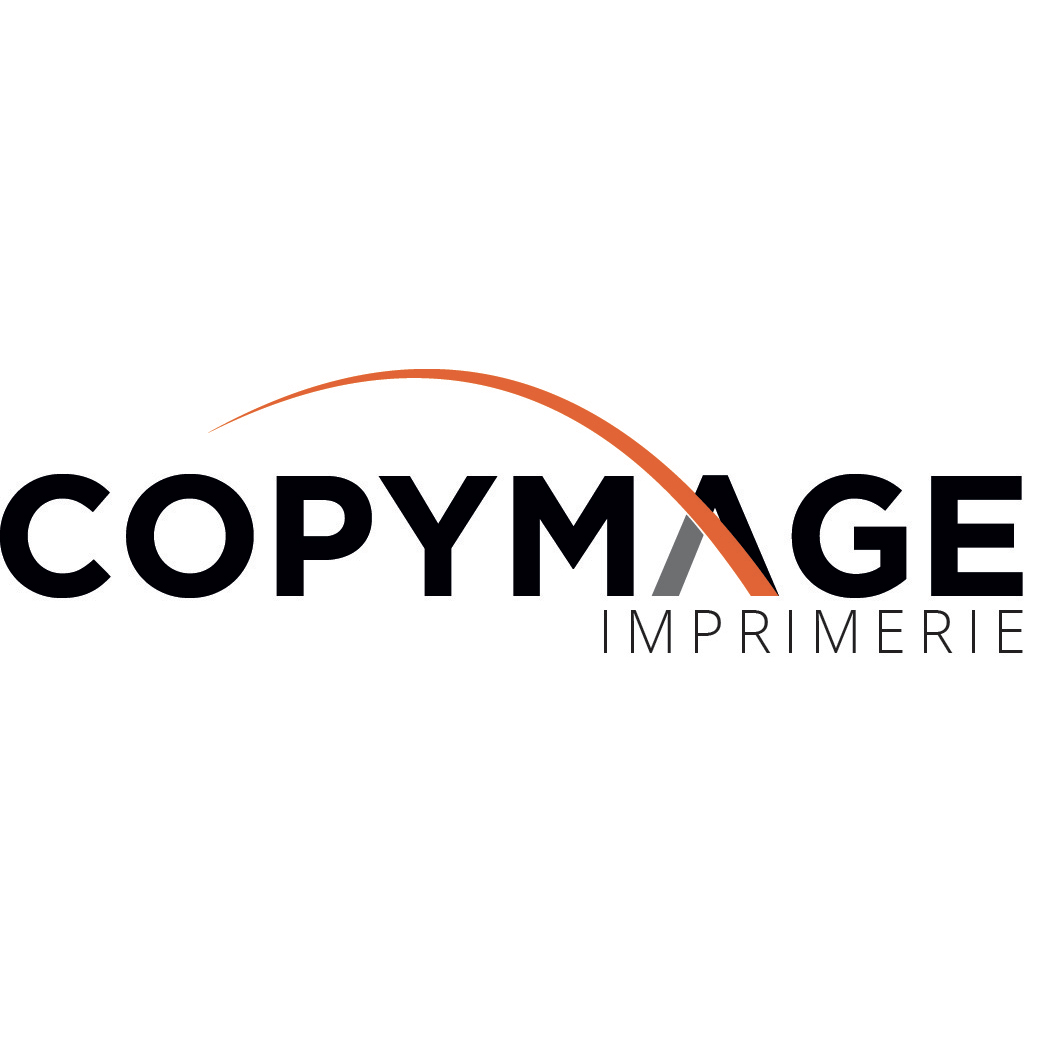
Tips & tricks from your printer
Which binding should you choose for your multi-page folder?
To turn a single sheet of paper into a brochure, booklet or magazine, it must be bound together. There are various techniques for this, including spiral binding, stapled binding and glued square back binding. Each of these techniques has its own specificities, advantages and limitations. We explain how to choose the type of binding that best suits your multi-page file.
What types of bindings exist and which one should be chosen for your documents?
Binding is a crucial step in the design of a multi-page folder. Not only does it bind the pages together, it also gives your brochure its final shape and makes it easier to use. Binding also ensures the strength and durability of your presentation or sales material.
Which binder to choose? There are certain criteria to consider, here are some of them:
- Economy: spiral binding and stapled binding are the preferred solutions if you have a small budget.
- Emergency: these two types of binding are also recommended if you want to get your company report quickly. We can indeed produce stapled or spiral-bound files in 4H. Glued square back bindings require more time, especially to let the glue dry.
- Practicality: the spiral binding allows the document to be opened flat, making it easier to read and take notes. It is generally used for the design of training books, dissertations and annual reports.
- Durability: the glued square back binding ensures an excellent longevity of your document. With a hard cover and pages glued with PUR glue, the pages cannot come loose.
Of course, if you want to stick to the quicker and cheaper solutions of spiral or stapled binding, there are solutions to ensure the strength and durability of your bound file. You can add hard covers to the front and back of your bound file. This cover can be transparent, the rhodium, and thus leave your first page presenting your subject visible.
- Premium image: which binding should you choose to give your document the most value? There's no doubt that a glued square-back binding offers a premium, high-quality look, just like in a bookshop.
- Number of pages: spiral binding can accommodate up to 450 sheets and perfect binding up to 550 sheets. Stapled binding can accommodate a maximum of 40 sheets and the sheets must be in multiples of 4. For glued binding, a minimum number of pages is required and the spine must be at least several millimetres thick. Consequently, printed matter with a small number of pages is more often bound with metal or plastic spirals or stapled.
Spiral binding
Which binding should you choose for your documents? Spiral binding is the most common, most practical and most economical of all. The main advantage of this binding method is thatit allows the document to be opened flat, making it easier to read. The other advantage of this type of binding is that it can also be done very quickly. At Copymage, we can print and bind your document in less than 4 hours, which is very useful when you need to make last-minute changes a few hours before your presentation or the handing in of your internship report.
Whether metal or plastic, spiral binding is very versatile and is recommended for the following communication and presentation media
- Menus
- Calendars
- Training book
- Notepads
- Brochures
- Dissertations and internship reports
- Training file
- Activity report
- Annual review
- Company report
The technique consists of punching holes in the margin of the printed block of sheets and the cover. The spiral should then be wound through the holes. It should be noted that when printing, margins must be provided to prevent the holes from obscuring text.
Which binder should I choose for large files? Spiral-bound folders are suitable for thick files of up to 450 sheets or 900 pages in double-sided printing. Of course, the weight of the paper must be taken into account when calculating this maximum as well as the diameter of the spiral.
Many options are available to make your multi-page folder a product that meets your needs:
- The choice between metal spiral and plastic spiral. Which binding should you choose for your bound files? While the plastic spiral allows you to add sheets to the file without damaging it, the metal spiral ensures a good solidity and a premium look to your file. Both types of binding ensure good handling and an impeccable finish.
- The addition of a cover and cardboard spine to protect and stiffen your bound file.
- The addition of a transparent rhodoïd to protect the document while leaving the cover visible.
- The choice of binding colour. There are several colours available, so it is up to you to choose the ones that are consistent with your brand colour or cover colour.
The stapled binder
Which binding should you choose for your documents? Stapled bindings are equally popular for their convenience and economy. The main advantage of stapled binding is its low cost and quick assembly. Another advantage of stapled binding is its discretion. The staples are barely visible and the printing is visible right in the fold of the document. This immersive effect is ideal for highlighting visuals.
This type of binding also allows for a good flat opening and with the low use of material for this process, it has an ecological side.
This binding technique is easy to use and lends itself well to the production of a variety of print products, including
- Brochures
- Magazines
- Booklets
- Newspapers
- Notices
- Catalogues
- Presentation leaflets
In this technique, the sheets are stacked and bound together before being stapled at the back to hold them together. The folding is done in half and two staples are usually used for this type of process.
The maximum number of pages again depends on the paper weight, but should not exceed 40 sheets or 80 pages when printing on both sides.
- Note that to make the folder more rigid, a cover with a thicker weight can be integrated.
- For an incomparable result, we recommend adding a matt, glossy or soft touch lamination for an original and silky touch.
- To enhance and highlight an important visual element (logo, product image, etc.) of your document, the selective varnish or 3D finishing option is also to be preferred.
The glued square back binding
Which binding should you choose for your documents? Glued square back binding is a more specific technique. Thanks to the PUR glue used, the pages are indestructible, thus guaranteeing the product a very long life. You will obtain a premium and elegant look like the books you find in bookshops. This process enhances the content and proves the value you place on the presentation and the people to whom you give it.
It is suitable for the design of various print products such as
- Product catalogue
- Annual review
- Photo books
- Large brochures
- Pocket books
- Theses/dissertations
The sheets are laid out in a block to take their final shape. Small cuts are then made in the back so that the PUR glue can be applied quickly and easily. Once the glue has been spread on the edge, the sheets are bound together and to the cover. The reader can then leaf through the book or catalogue without fear of the sheets coming loose.
It should be noted that the glued square back binding technique is easily adapted to all types of format. The possibilities for customisation are endless, particularly for the edge of the book, where it is possible to add the name of the company, the logo or the date. The cover and spine can also be laminated or varnished as a finish. Finally, a creasing of the cover is also recommended to facilitate reading, especially beyond a certain thickness.
If you're wondering which binder to choose for your documents, we'd love to help. At Copymage, we offer each of these types of bindings. Our team will advise you on the most suitable method for the type of document you want to create. Please call us on 01 42 61 00 33 or email us at contact@copymage.com to discuss your printing project.
You can also browse through our various sections to find out which of the spiral, stapled or glued square back bindings is right for your document. You can choose from our various services such as the production of a company report, company notebooks, product catalogues or soft cover books. And if you need customised finishing for your bound document, we will be happy to advise you on your choice of paper and binding methods.
-
- All
products - Cards
- Brochure
Files - Advertising
- Printing
- Office automation
- Adhesives
- Signage
- Themes
- Printing
Express in 4H - Newsletter
IMMEDIATE
CUSTOMISED QUOTE
Congés d'été
Nous serons fermés du 12 au 18 août.
Bon été à tous ! ☀️
Les commandes en ligne passées entre le 12 et le 18 août seront traitées à partir du 19 août.









